Photos: ‘Route 66: The Road and the Romance’
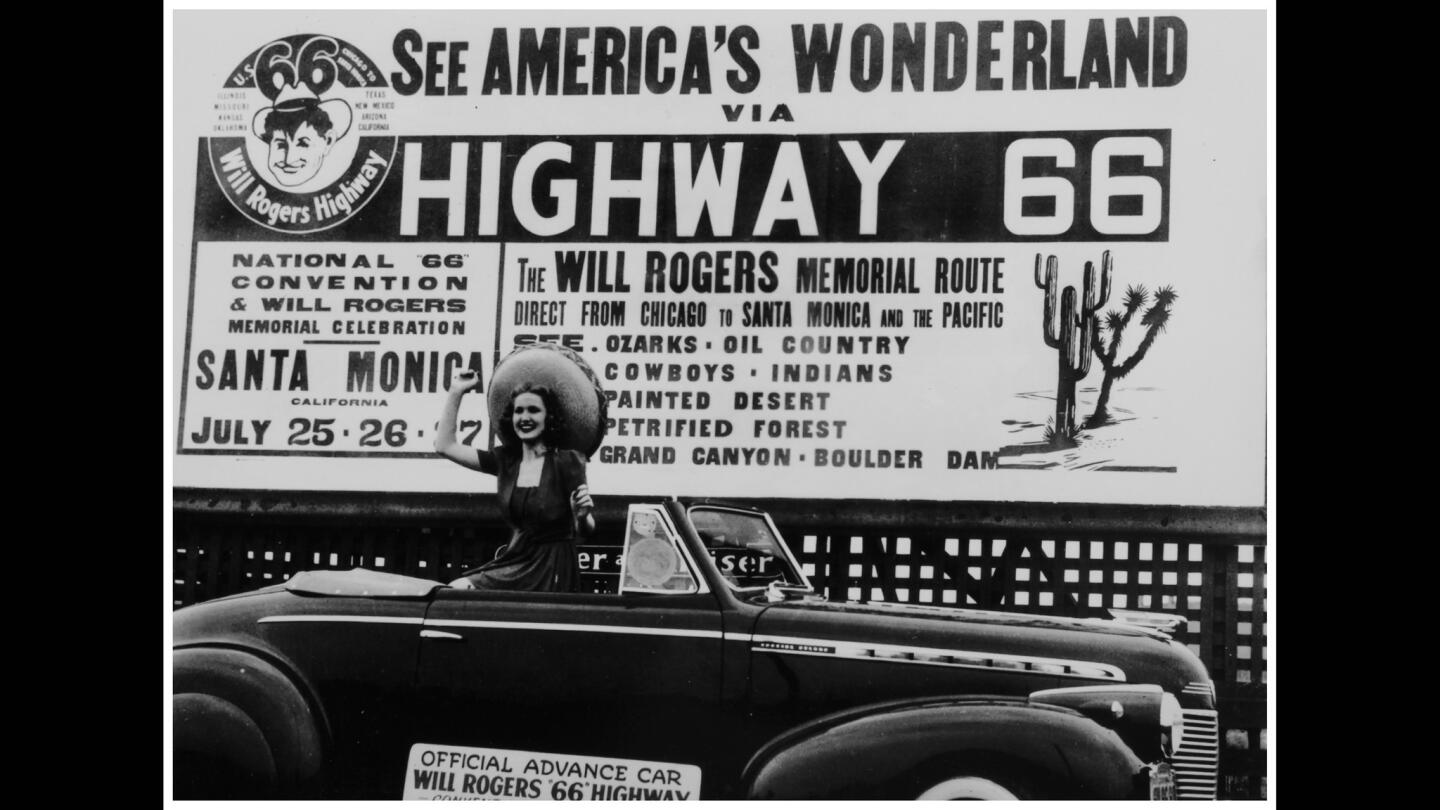
A billboard in 1940 touts the National “66” Convention & Will Rogers Memorial Celebration. The photo (printed circa 2010) is part of more than 250 historical artifacts on display at the Autry museum. (Collection of Steve Rider / Autry Museum)
Click through the photos for a look at “Route 66: The Road and the Romance” at the Autry National Center of the American West.
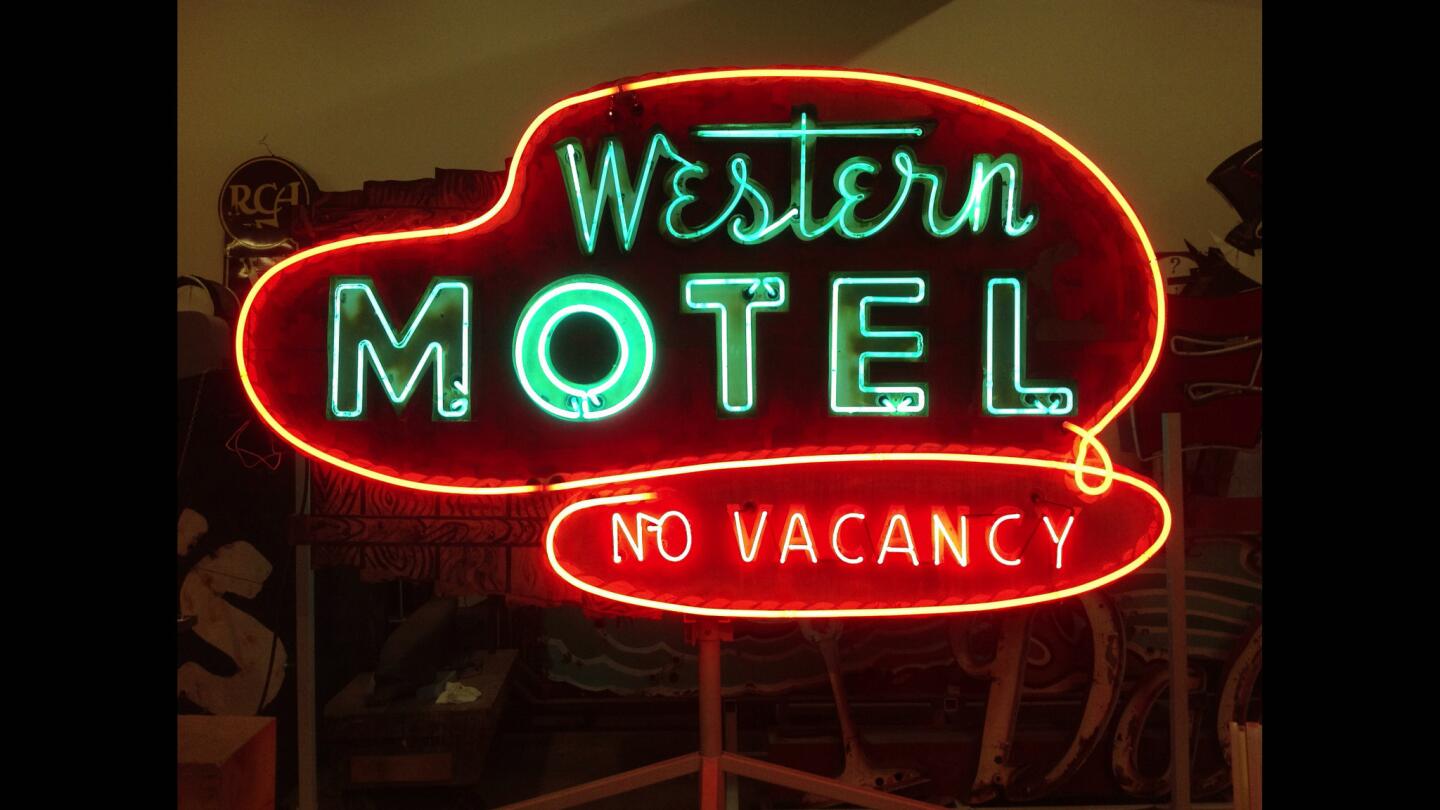
The “Western Motel” neon sign, circa 1950, is among the historical artifacts on display. (Museum of Neon Art / Autry Museum)
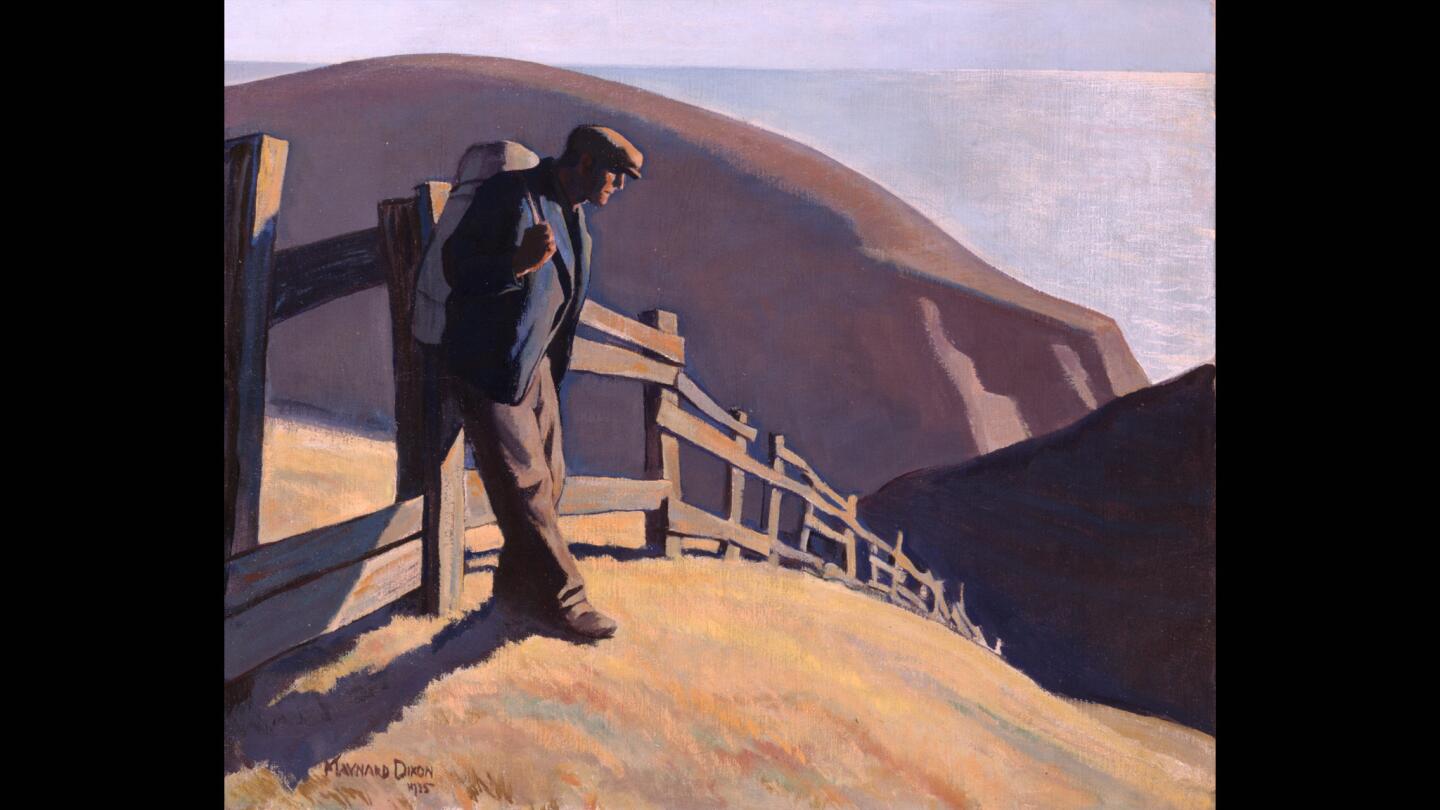
Artwork on display, including Maynard Dixon’s 1935 “No Place to Go,” illustrates the pull of the open road. (Brigham Young University Museum of Art, gift of Herald R. Clark / Autry Museum)

A 1970s road sign from Williams, Ariz., is among the more than 250 artifacts gathered for the exhibition. (Collection of Steve Rider / Autry Museum)
Advertisement
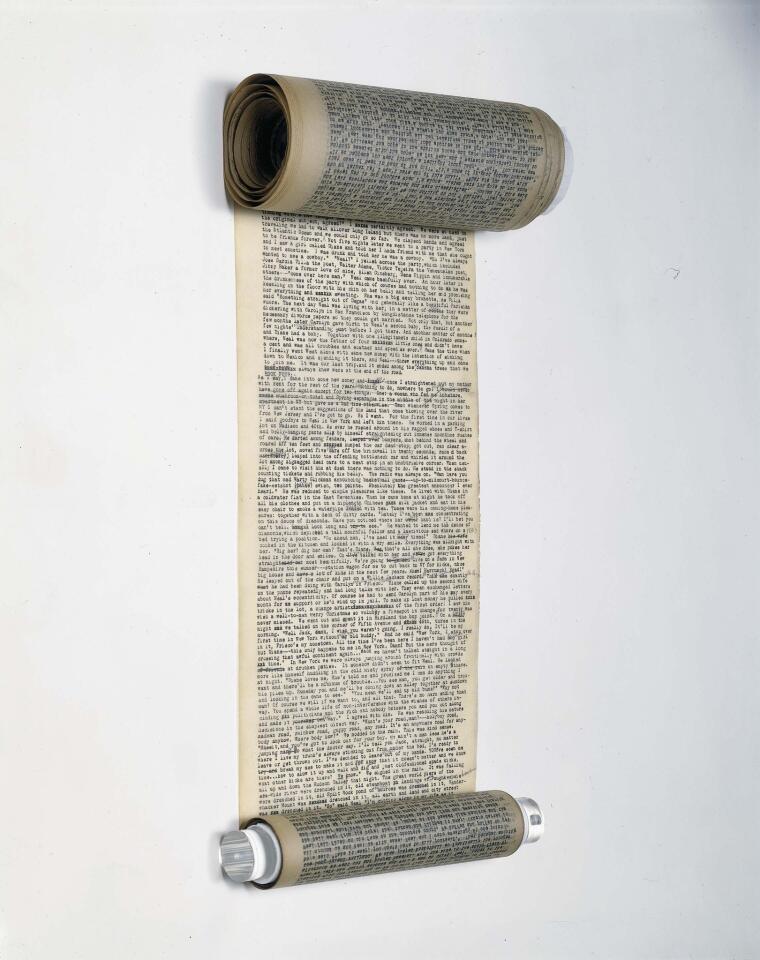
Author Jack Kerouac’s original manuscript for “On the Road,” from 1951. The novel, based on Kerouac and his friends’ travels across America, was published in 1957. ( This manuscript is on loan from the collection of James S. Irsay. Photograph Courtesy of Christie’s, New York. Copyright Estate of Anthony G. Sampatacacus and the Estate of Jan Kerouac / Autry Museum)
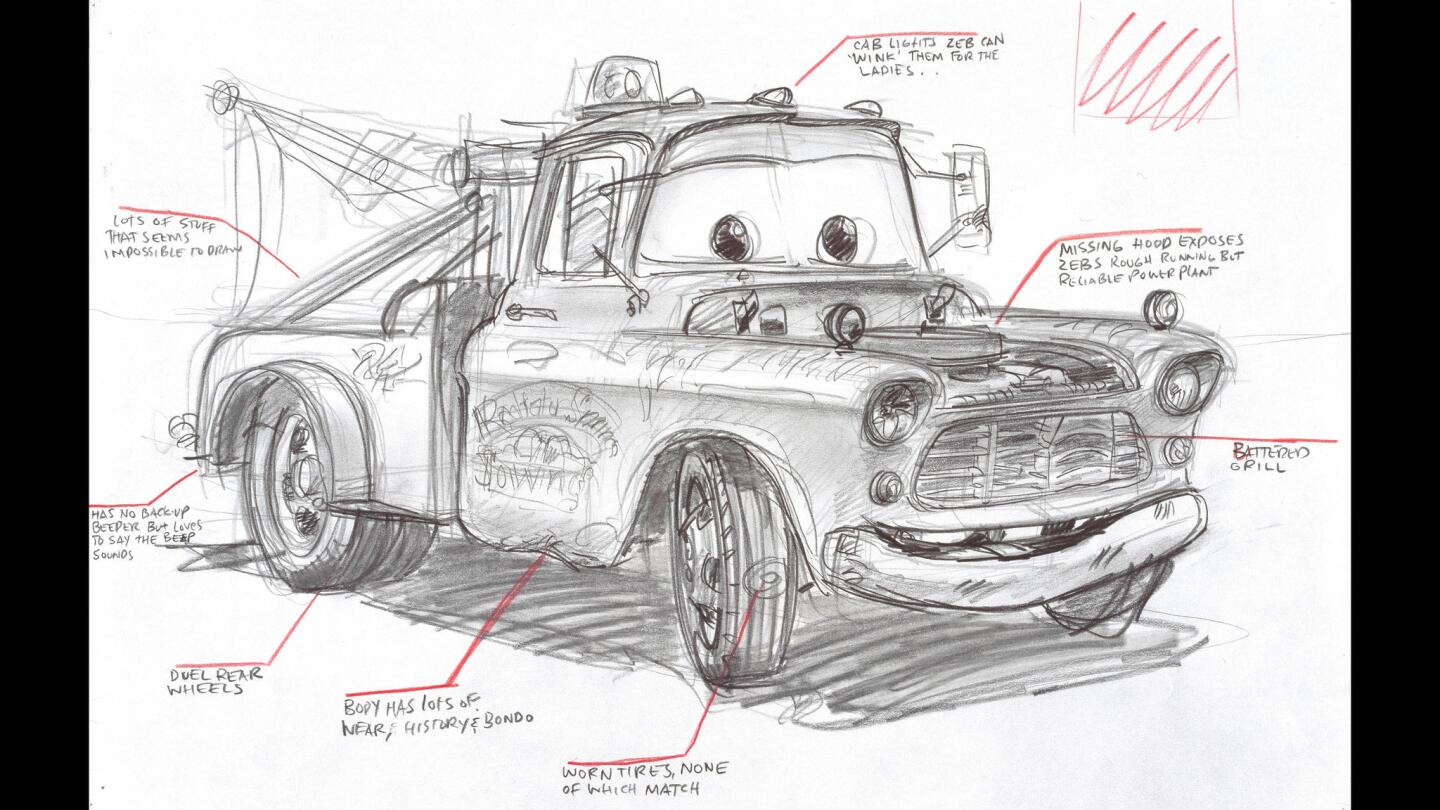
A sketch of Mater for Pixar’s 2006 film “Cars” by Bob Pauley. The movie’s fictional Radiator Springs is a composite of multiple locations along Route 66. (Pixar Animation Studios / Autry Museum)
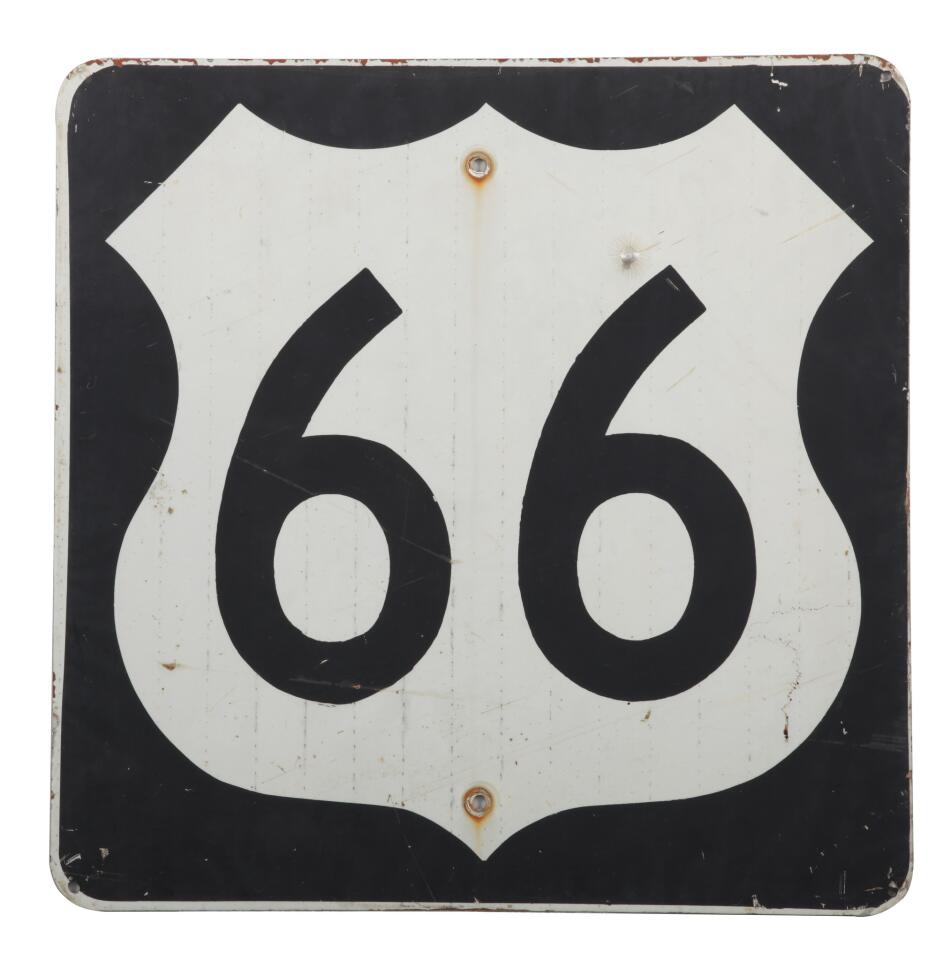
A 1960s road sign. (Collection of Steve Rider / Autry Museum)
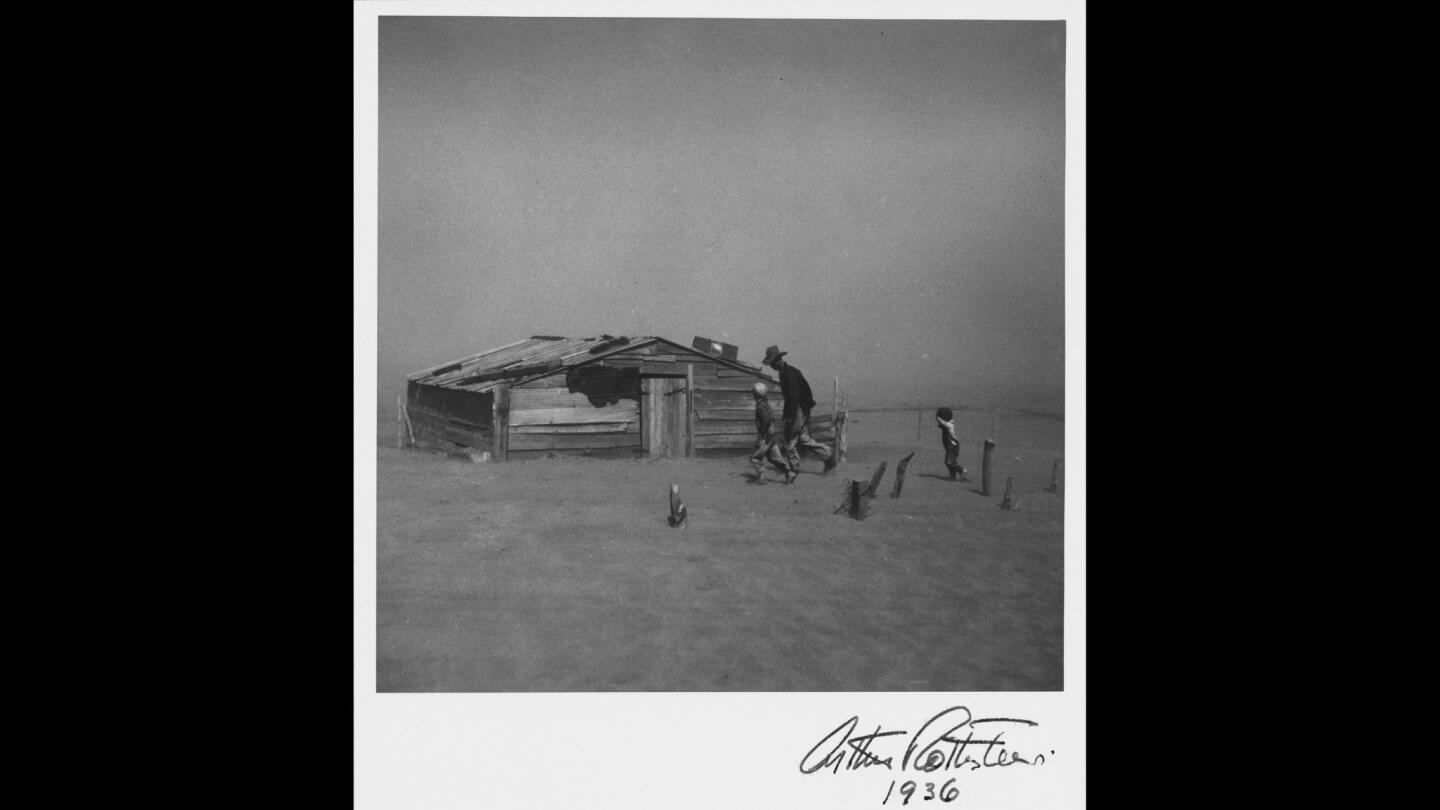
The Dust Bowl era comes to life in Arthur Rothstein’s “Landscape With House,” 1936. (The J. Paul Getty Museum / Autry Museum)
Advertisement
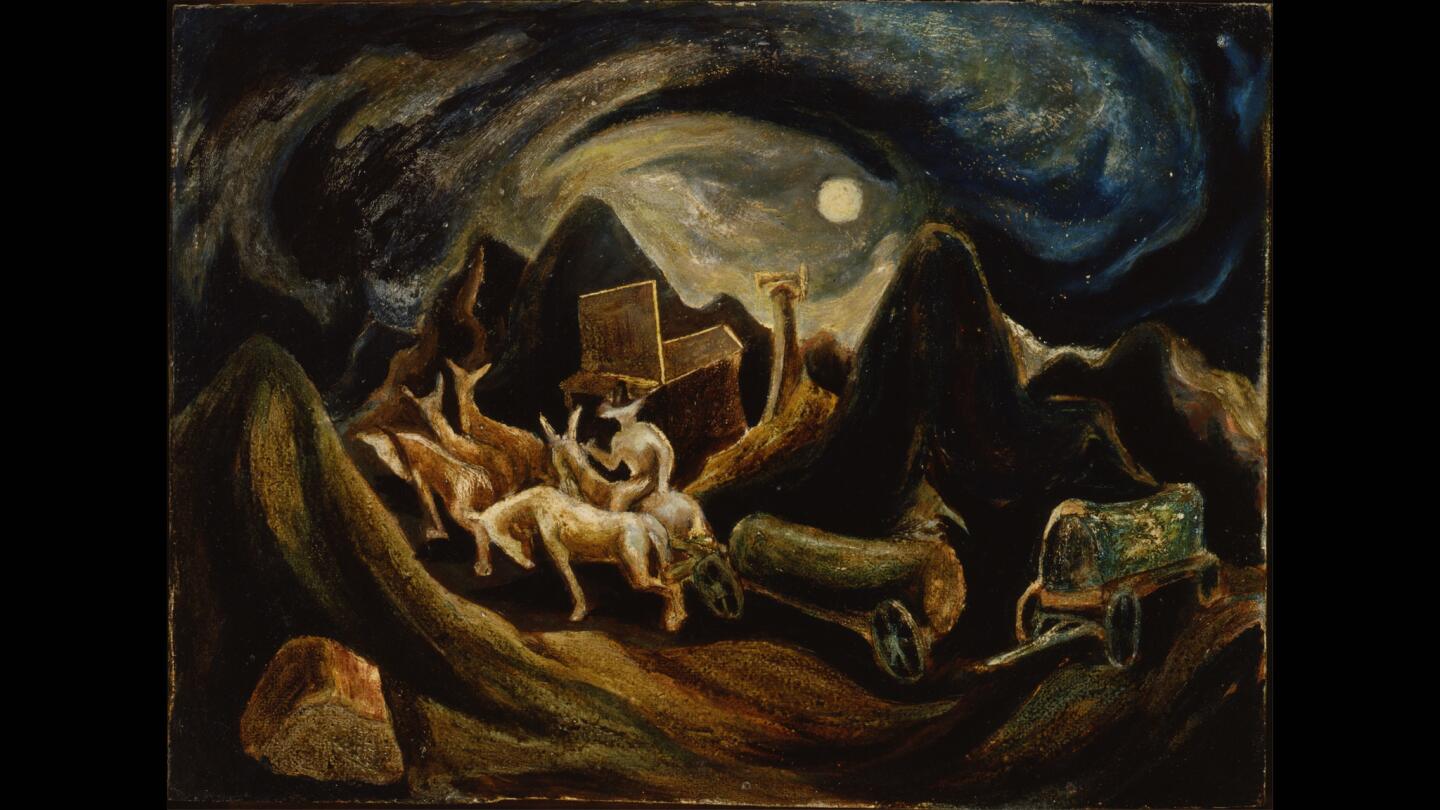
The Autry’s collection of artifacts in “The Road and the Romance” is complemented by artworks such as “Going West,” an early painting from Jackson Pollock, circa 1934-35. (Smithsonian American Art Museum, Gift of Thomas Hart Benton / Autry Museum)
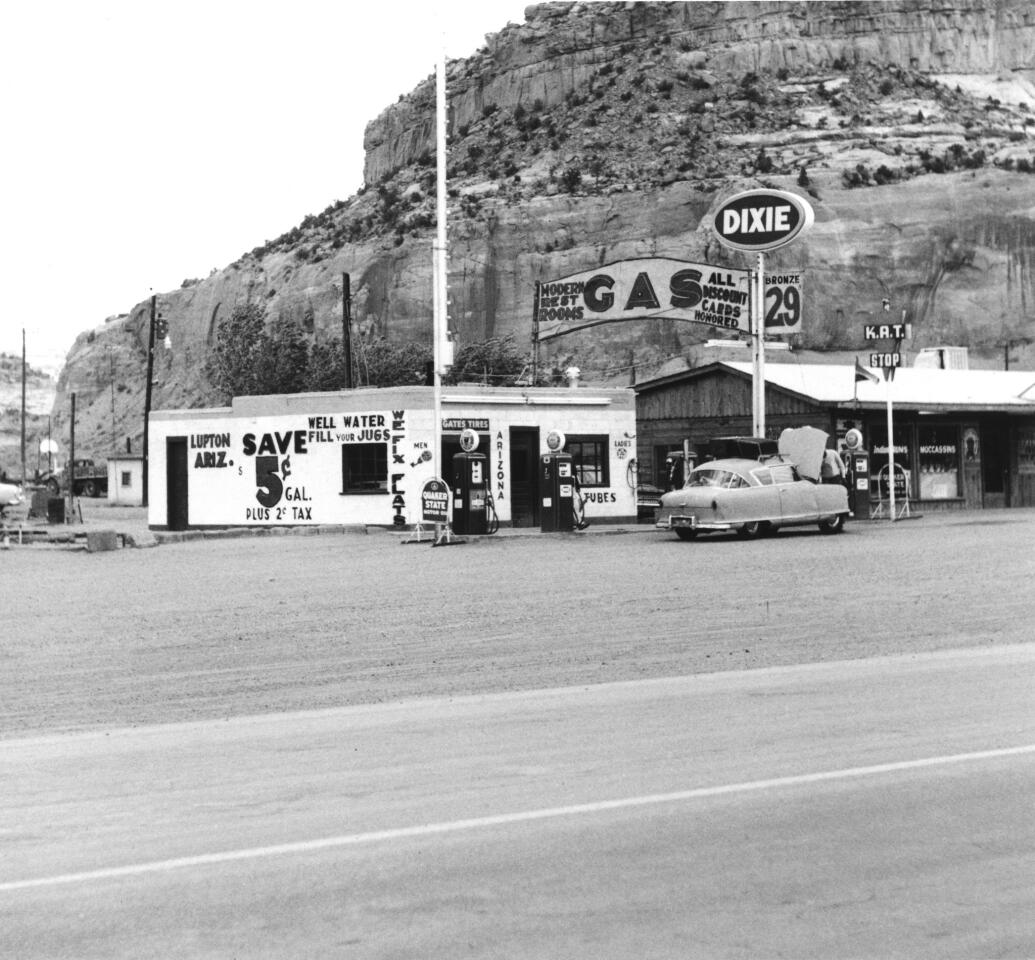
Ed Ruscha’s photograph “Dixie, Lupton, Arizona,” depicts the gas station in 1962. (Ed Ruscha / Autry Museum)
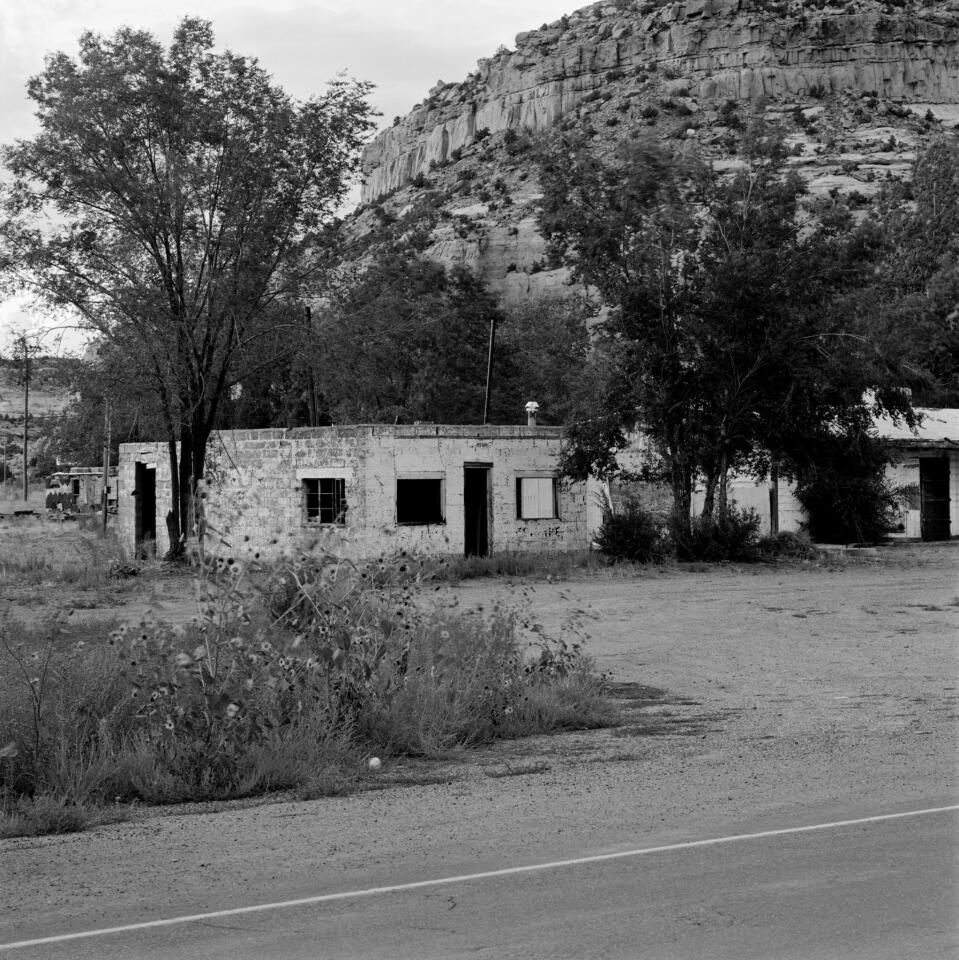
Jeff Brouws photograph “Dixie, Lupton, Arizona,” depicts the former gas station in 1991. (Jeff Brouws and Craig Krull Gallery / Autry Museum)
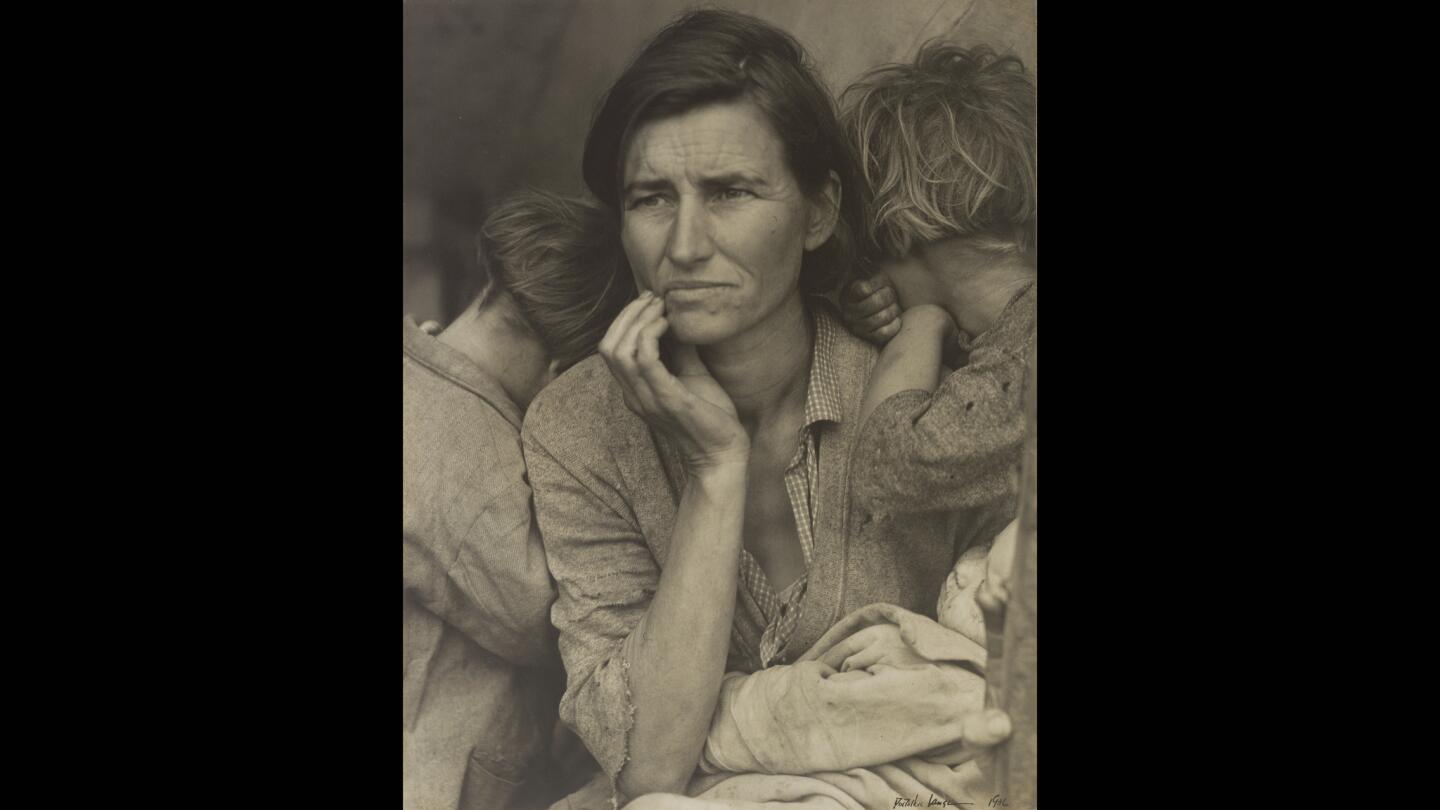
Dorothea Lange’s “Human Erosion in California (Migrant Mother)” from 1936. Autry’s exhibit aims to contextualize the American history that unfolded along Route 66 since its inception in 1926. (The J. Paul Getty Museum / Autry Museum)
Advertisement
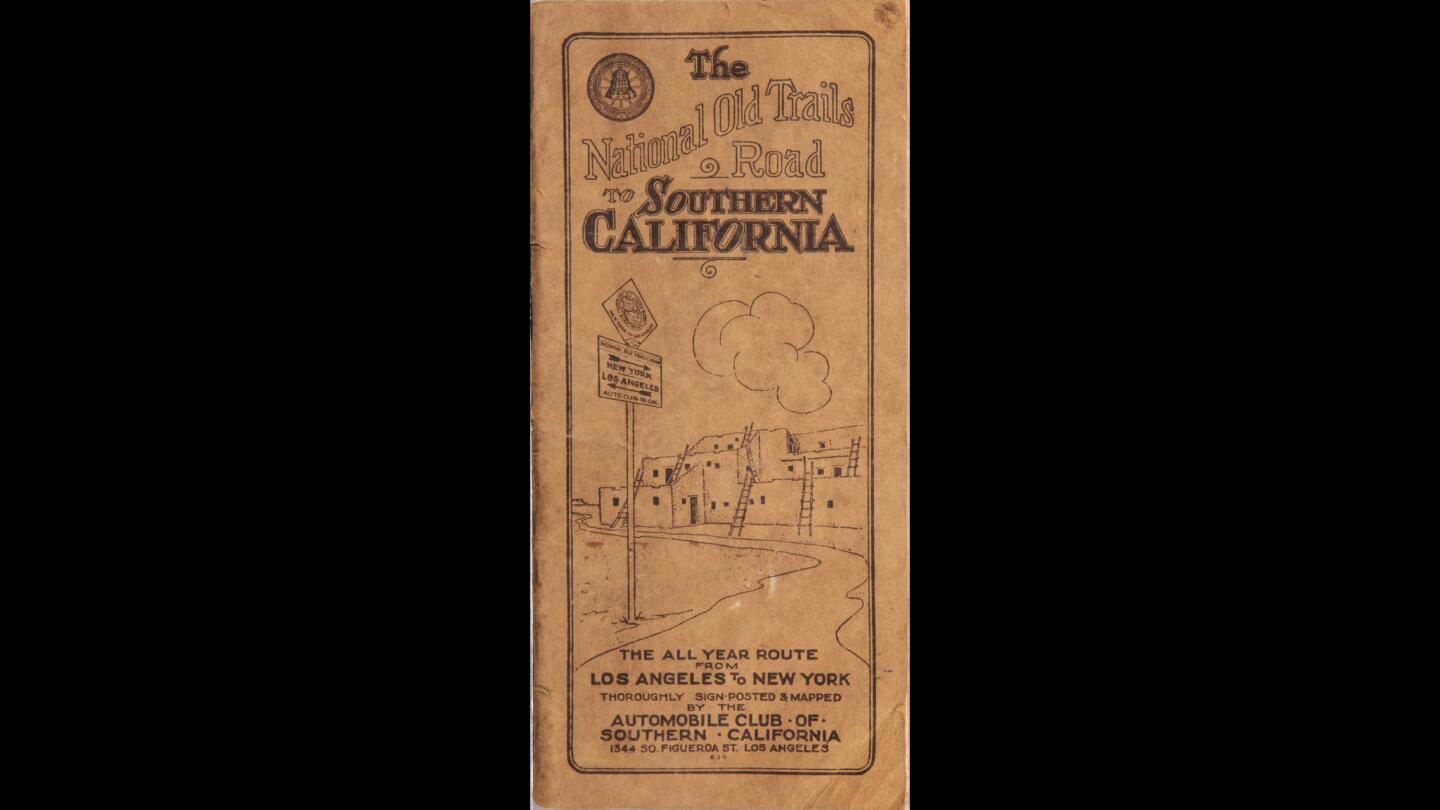
A map from 1916 showing a coast-to-coast route, from the Automobile Club. (Collection of Steve Rider / Autry Museum)
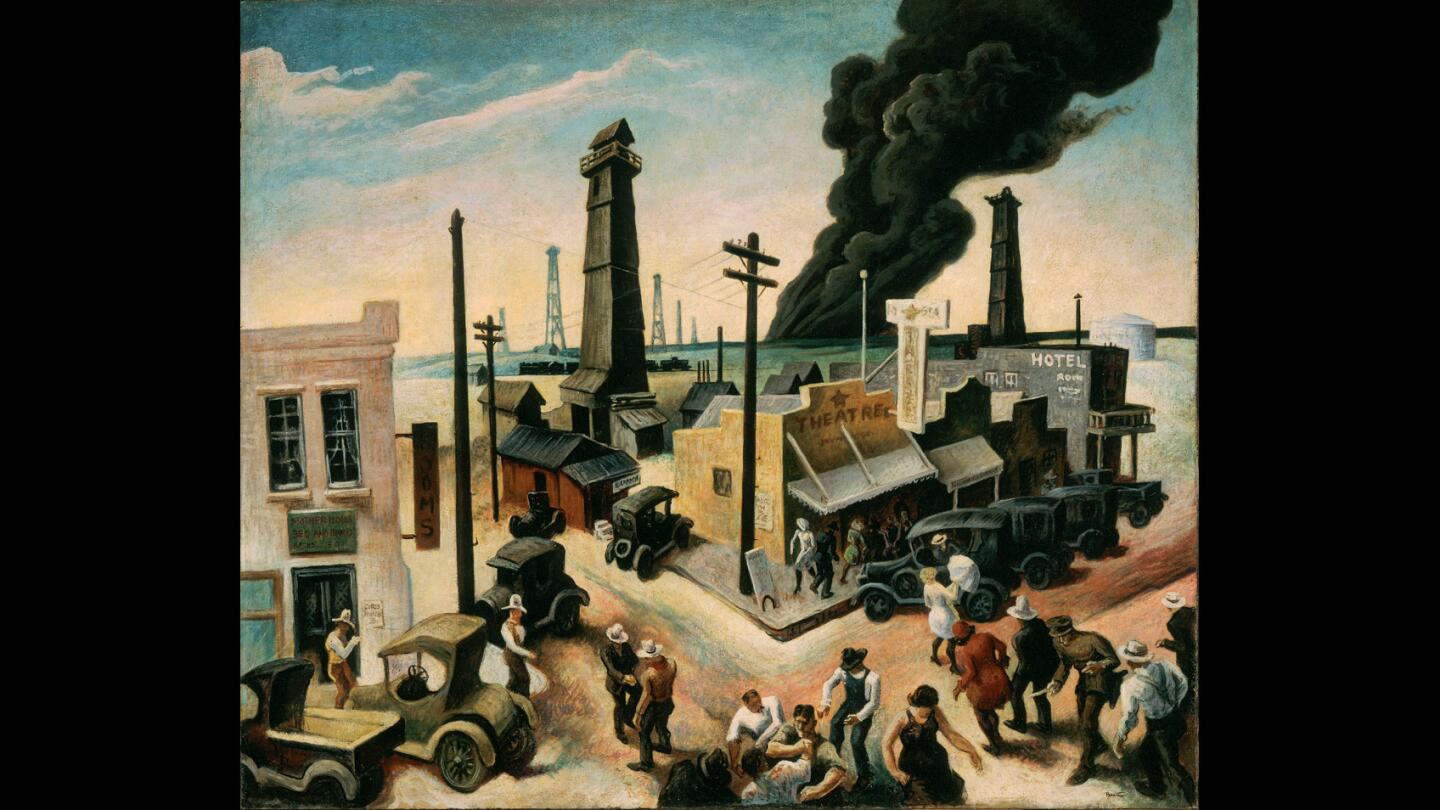
Thomas Hart Benton’s 1928 painting “Boomtown” depicts the spirit of a 1920s Texas oil town. (Memorial Art Gallery of the University of Rochester: Marion Stratton Gould Fund / Autry Museum)
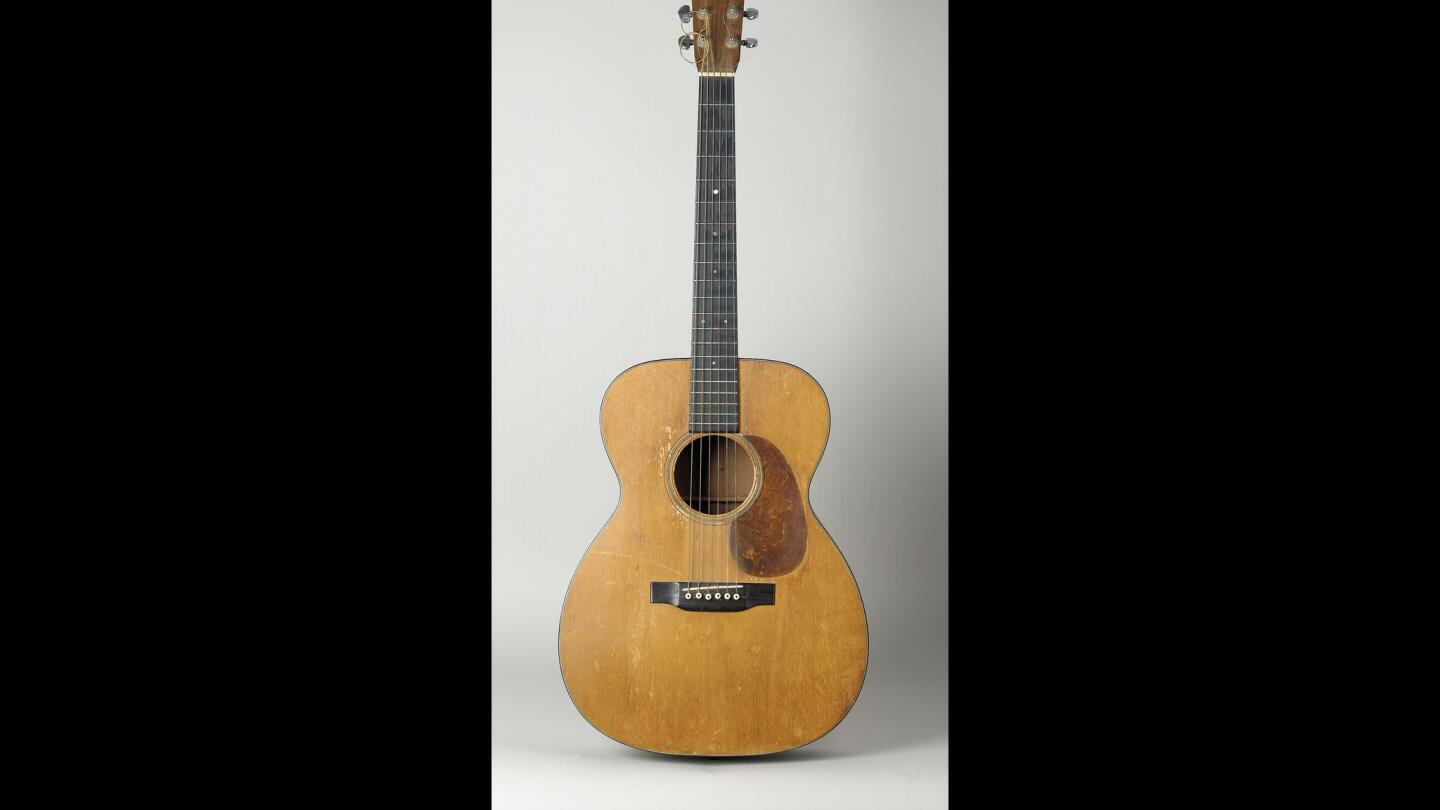
Woody Guthrie’s Martin guitar, 1937. THe Autry show was six years in the making. (EMP Museum, Seattle / Autry Museum)







